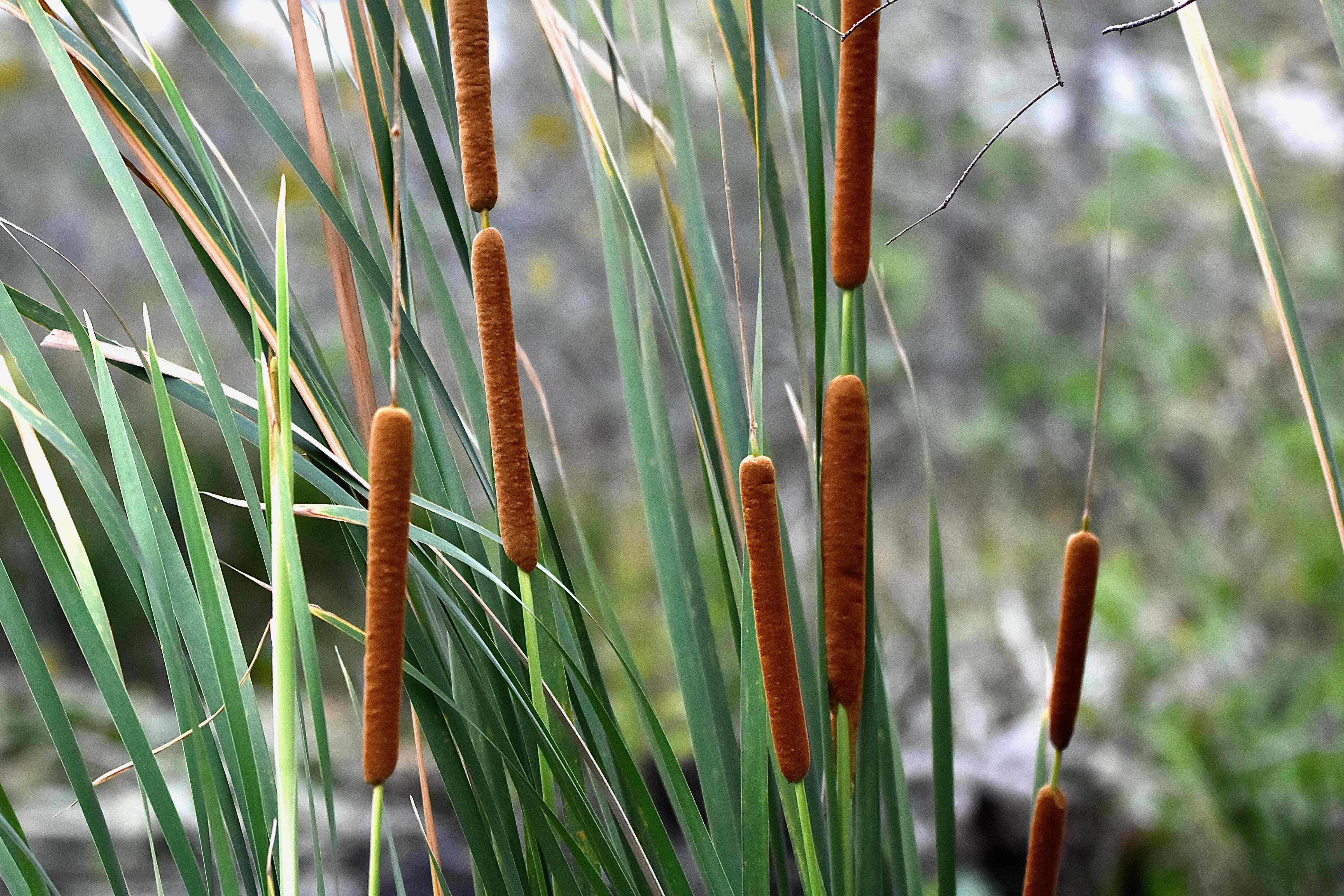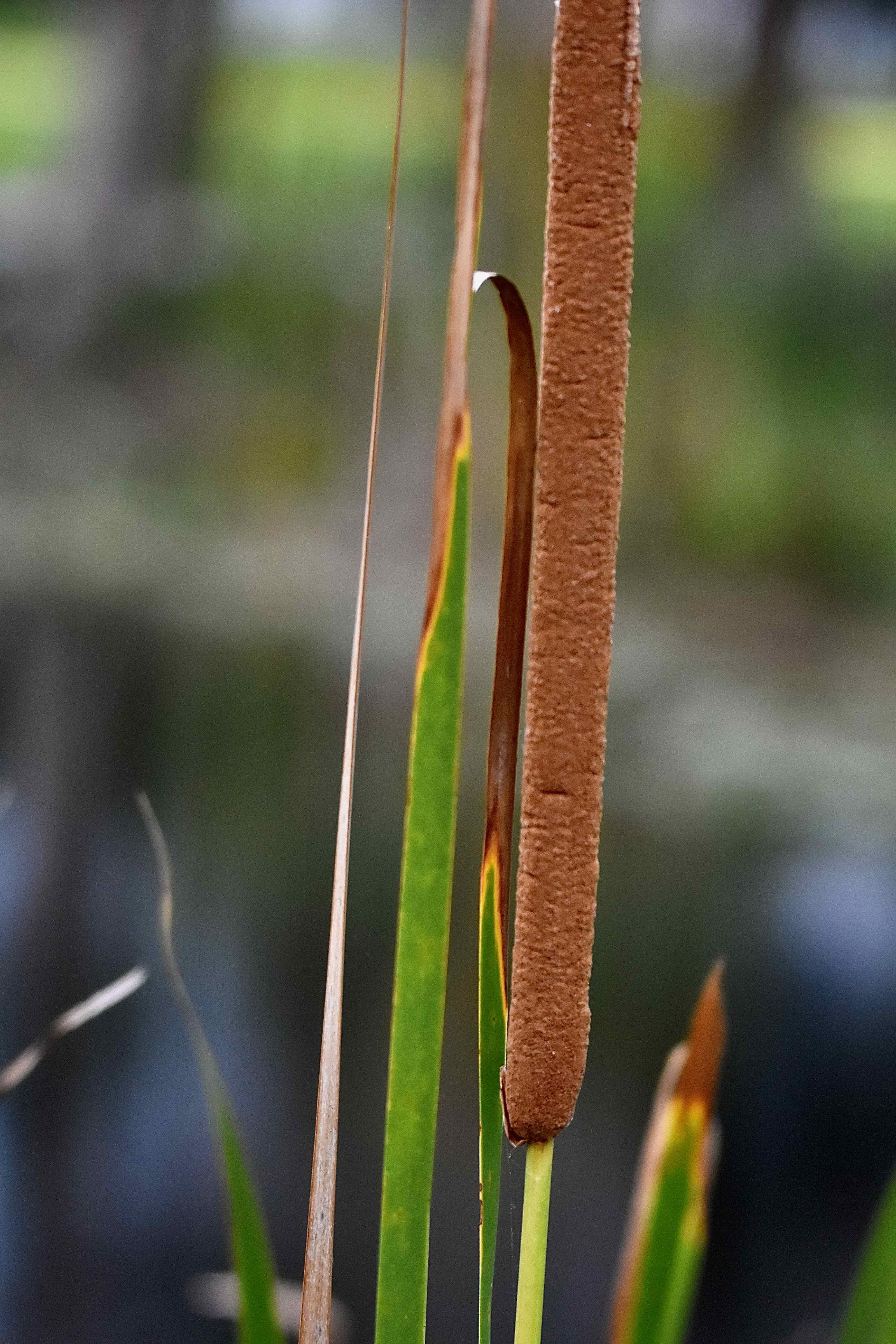
Southern cattails, photographed at Loxahatchee National Wildlife Refuge, Boynton Beach, Palm Beach County, in March 2017.
Cattails arguably are the most recognizable group of wetland plants in North America, maybe on the planet. They are the very definition of ubiquitous, and they shout marsh.
Worldwide, there are something like 30 species of cattail scattered on every continent save Antarctica. Two of these are native to Florida, southern cattails, Typha domingensis, and common cattails, Typha latifolia. Southern is the most common type found in South Florida, and has a range that extends southward into South America. Common cattails is on the rare side here, but its range spans North America's two coasts and extends far into Alaska and northern Canada.
Both cattail species have long, slender leaves and brown, fuzzy flower spikes. Cattails can reach 9 feet in tall, while the flower spikes are as long as a foot. The brown spikes are actually a collection of tiny flowers.
The distinguishing feature between the two South Florida species is the flower stalk: southern cat tail has a gap separating the male flowers at the top and the female flowers at the bottom. Common cattails lacks the gap. The two are close enough genetically that they will hybridize when growing in proximity of each other.
Both species form rhizomes, or underground stems, that allow the plants to spread and form dense colonies. In fact, they can become the dominant plant form in places. Cattails are incredibly useful plants. Any Boy Scout will tell you that cattails are the Swiss Army Knife of survival plants. They can be used for food and fuel. There are recipes for pancakes and casseroles using cattails; the flowers can be used to staunch bleeding, the strap-like leaves for making shelters and weaving mats. The rhizomes are starchy and fairly high in protein; the heart of young plants can be eaten raw or boiled, as can the leaf bases. The pollen can be used like flour. They can be used as candles, for bedding, to make biofuels, insulation and paper.
The one thing to know, however, is that cattails accumulate whatever is in the water, including heavy metals and other toxins. So if you eat it, it's critical to be sure it's growing in clean water.
One more thing: its ability to accumulate whatever pollutants might be in the water makes it a useful plant in cleaning the waters feeding the Everglades. At the same time, however, it has a tendency to grow like crazy and displace other wetland plants, making it a major headache as well.
Both southern cattails and common cattails are members of Typhaceae, the cattail family.

